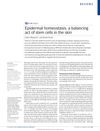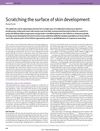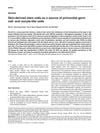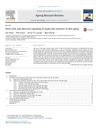Deciphering the Mesodermal Potency of Porcine Skin-Derived Progenitors by Microarray Analysis
April 2010
in “
Cellular Reprogramming
”
porcine skin-derived progenitors SKP fibroblast-like cells SFC microarray analysis extrinsic signaling pathways ErbB MAPK ECM-receptor interaction Wnt TGF-β Dicer pathway transcriptional regulation neural potency mesodermal differentiation real-time qPCR one-way ANOVA skin-derived progenitors extrinsic signaling ErbB pathway MAPK pathway Wnt pathway TGF-beta transcription regulation neural potential mesodermal potential qPCR ANOVA
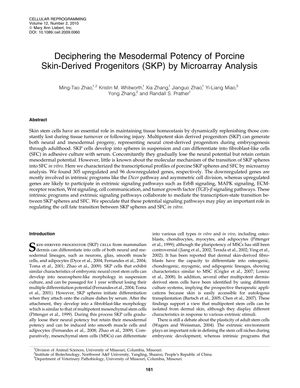
TLDR Pig skin cells can turn into mesodermal cells but lose their ability to become neural cells.
The study explored the molecular changes that occur when porcine skin-derived progenitors (SKP) transition into fibroblast-like cells (SFC) in vitro. Using microarray analysis, the researchers identified 401 differentially expressed genes, with 305 upregulated and 96 downregulated in SFC. The upregulated genes were associated with extrinsic signaling pathways like ErbB, MAPK, ECM-receptor interaction, Wnt, and TGF-β, which are indicative of strong proliferation potential and mesodermal differentiation. In contrast, downregulated genes were related to intrinsic cell functions such as the Dicer pathway and transcriptional regulation, suggesting a loss of neural potency. The study concluded that SKP spheres possess both neural and mesodermal potential, but as they become SFC, they lose neural potential while retaining mesodermal potential. The findings, validated by real-time qPCR and analyzed using one-way ANOVA, provide insights into the molecular mechanisms of stem cell differentiation and have implications for therapeutic applications. The study used 1×10^5 cells per RNA extraction from pools of two different fetuses, with three biological replicates and two technical replicates, resulting in six microarray measurements.
